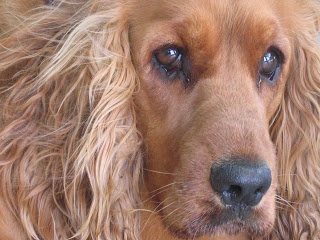
I noticed my oldest cat Chica, at age 16, was vomiting yellow frothy liquid. She had lost weight and seemed to be a little off. She was drinking more and urinating pale urine in large volumes.
I called my vet and made an appointment to bring Chica in. To start her off she told me to give Chica the homeopathic remedy Nux Vomica to stop the vomiting. It worked.
At the appointment, after a physical exam, Maggie told me she thought Chica had renal failure. We did blood work to be sure but all her symptoms were right on target. I was upset as I had just gone through illnesses with one of my other cats. Maggie told me she had great luck with some new natural treatments for renal failure and to not give up hope.
What we ended up using for her treatment are the products below...this is two years later and Chica is going strong.
Feline Renal Support by Standard Process of Palmyra, WI
This is a supplement made of bovine glandulars - kidney, liver, spleen. Plus other herbal ingredients. I give Chica two tablets a day.
Rehnnannie Eight FormulaThis is a Chinese herbal mix for strengthening the kidneys. I give her 1/8 to 1/4 of a teaspoon twice a day.
Terrain Max - Kidney Terrain (T-12)This is a multivitamin, mineral and cofactor supplement to boost kidneys. It is made by Apex Energetics of Irvine, CA. It contains a mix of colostrum, dandelion, nettle, flower remedies and other herbs and minerals. I giver her 6 drops daily.
And finally
Renelix, a homeopathic medicine for kidney dysfunction.
it is made in Germany and distributed by BioResource, Inc. of Cotati, CA. This has various homeopathic remedies used for detoxifying the kidneys, bladder and urological tract. I give her 4-6 drops a day of this.
A very important treatment is
subcutaneous hydration. Renal failure causes toxins to build in their system and this will help flush them out. Most vets tell you to start doing this weekly or more often depending on the diagnosis. I am not able to do this since Chica puts up a fight and struggles, wails. It is too stressful for her to force her to do this. I found that
Renelix does the job and give this to her daily instead.
I had already changed the cat food to a better quality brand like Wellness, Pet Gaurd, Innova to start. It seems the holistic view to diet is that high quality protein with little or no additives is best. The less the kidneys have to process in terms of toxins, the better they function.
You need to work with your vet and to try to find a holistic vet near you to help add to the treatment. I found western medicine to be very inadequate as far as treatment options for renal failure.
Another avenue I recommend is www.askariel.com. (See my sidebar)I found Renelix and Terrain Max through her site. This site belongs to Susan Davis who is a nutritionist for animals. Her dog was diagnosed with renal failure. She looked for options and created this site to help others. She also does consultations to patients not living near her in California.
Good luck and keep trying new things. So much comes into the healthcare markets everyday!













